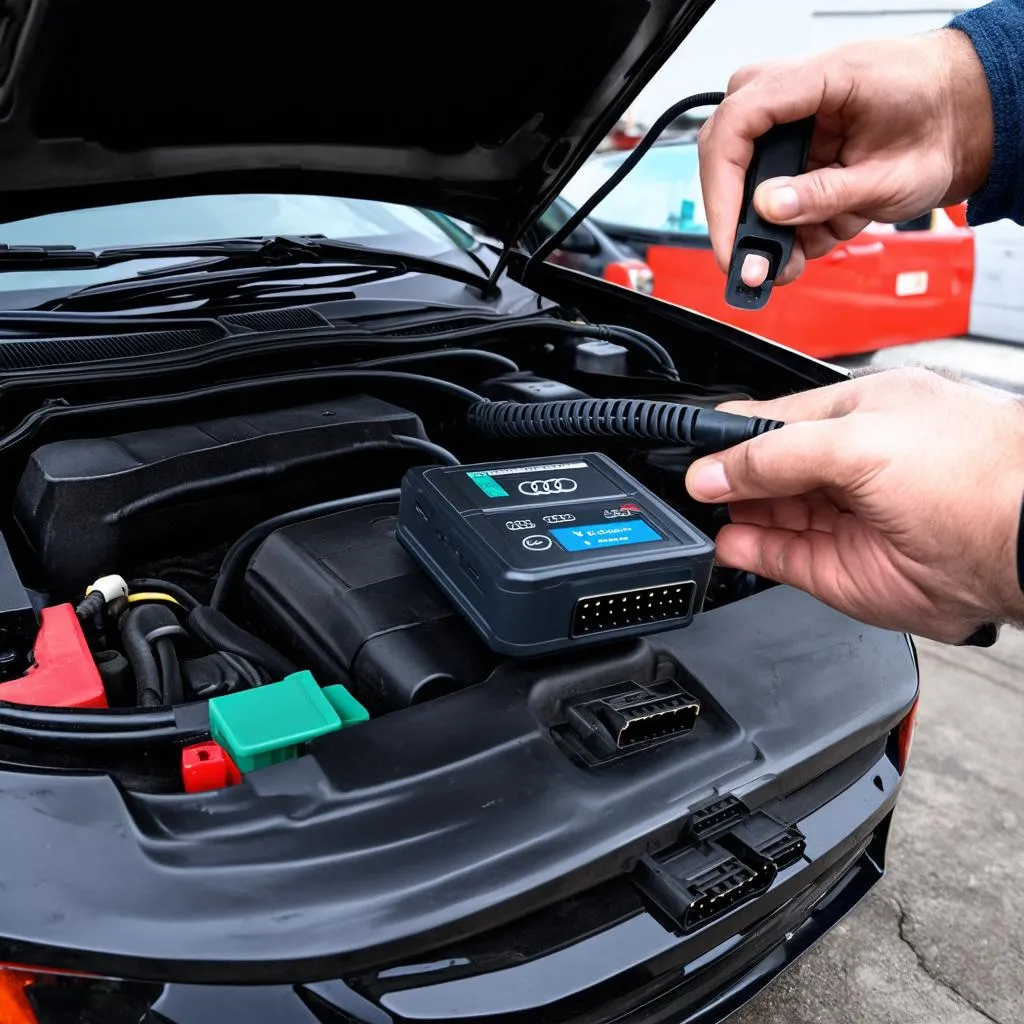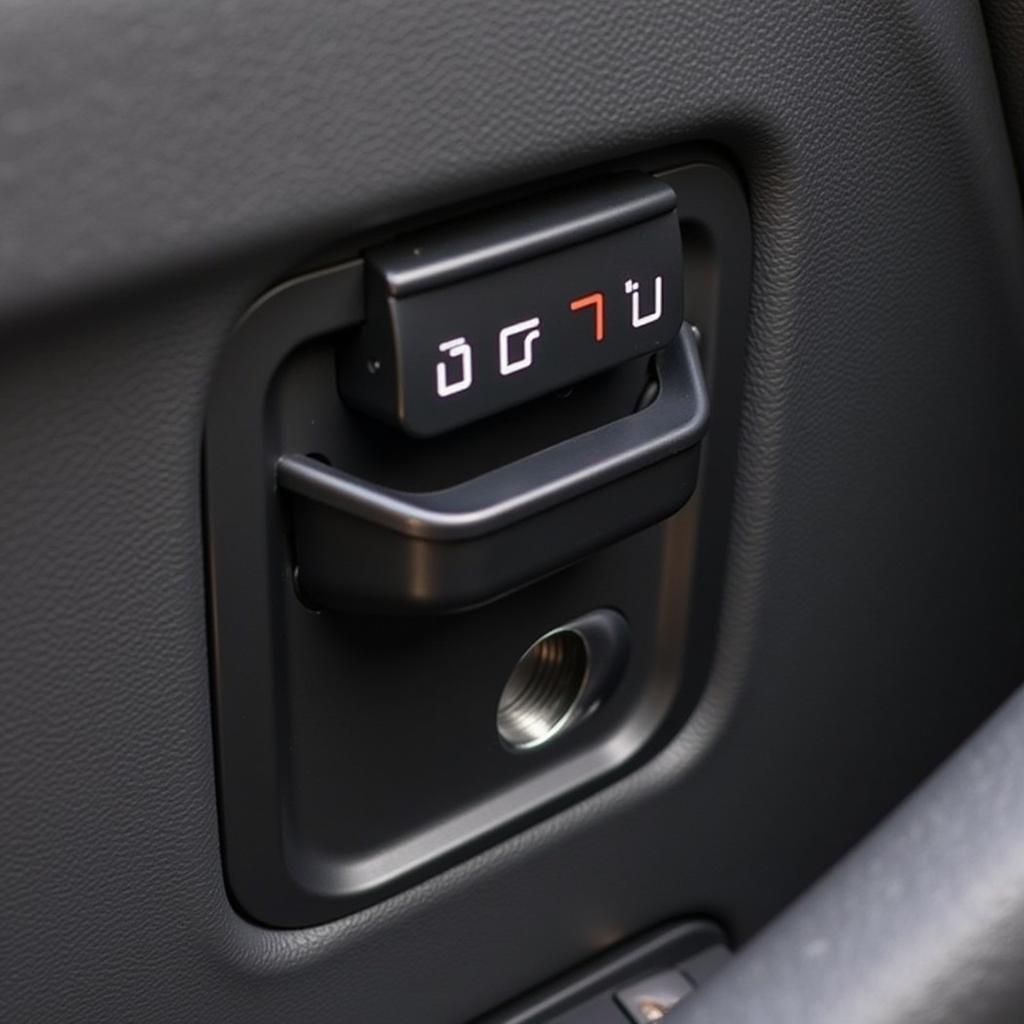As an Audi owner, you know that these German machines are renowned for their performance and luxury. However, even the most sophisticated vehicles can experience issues. This is where VCDS (VAG-COM Diagnostic System) comes into play.
This guide will delve into the world of VCDS codes for Audi, providing you with the knowledge to understand and address your car’s needs. We’ll explore everything from basic definitions to advanced troubleshooting, empowering you to maintain your Audi’s peak performance.
What are VCDS Codes for Audi?
VCDS is a powerful diagnostic software that allows you to communicate with your Audi’s onboard computer. When your Audi encounters a problem, it generates a Diagnostic Trouble Code (DTC), also known as a VCDS code, to identify the issue.
These codes are alphanumeric, consisting of a letter and four digits (e.g., P0101). The letter indicates the system affected (e.g., P for Powertrain), and the digits pinpoint the specific problem.
How to Use VCDS to Read and Interpret Audi Codes
Using VCDS to read and interpret codes is a relatively straightforward process:
- Connect: Connect your VCDS interface to your Audi’s OBD-II port (usually located under the dashboard).
- Launch: Open the VCDS software on your computer.
- Select: Select your Audi’s model and year.
- Scan: Initiate a scan for fault codes.
- Interpret: VCDS will display the found codes along with their descriptions.
Expert Insight: “Understanding the context of the codes is crucial,” says automotive engineer Dr. Emily Carter. “A single code can have multiple interpretations depending on the vehicle’s history and recent events.”
Common Audi VCDS Codes and Their Meanings
Here are some frequently encountered VCDS codes for Audi vehicles:
- P0171 (System Too Lean Bank 1): Indicates an issue with the air/fuel mixture, possibly caused by a vacuum leak, faulty oxygen sensor, or fuel delivery problem.
- P0300 (Random/Multiple Cylinder Misfire Detected): Suggests a problem with the ignition system (spark plugs, coil packs), fuel delivery, or internal engine components.
- U0100 (Lost Communication with ECM/PCM): Indicates a loss of communication between the engine control unit (ECU) and other control modules, potentially due to a wiring issue or faulty ECU.
Advantages of Using VCDS for Audi Diagnostics
VCDS offers numerous benefits over generic OBD-II scanners:
- In-Depth Information: Provides detailed descriptions of fault codes, often including potential causes and troubleshooting tips.
- Advanced Functions: Allows access to advanced features like module coding, adaptations, and live data monitoring.
- Cost-Effective: Can be significantly more affordable than dealership diagnostic services in the long run.
Tips for Effective VCDS Troubleshooting
- Clear Codes and Retest: After addressing a problem, clear the codes and retest to ensure the issue is resolved.
- Cross-Reference: Refer to online forums and resources like Ross-Tech’s Wiki for in-depth information on specific codes and their potential solutions.
- Seek Professional Help: If you’re unsure about a diagnosis or repair, don’t hesitate to seek assistance from a qualified Audi technician.
 Audi VCDS Scan
Audi VCDS Scan
Frequently Asked Questions about VCDS Codes for Audi
Q: Can I use VCDS to reset service lights on my Audi?
A: Yes, VCDS allows you to reset service reminders for various maintenance intervals, including oil changes, brake pad replacements, and inspection services.
Q: Is VCDS compatible with all Audi models?
A: VCDS supports a wide range of Audi models, from older generations to the latest vehicles. However, it’s essential to check compatibility with your specific model and year on the Ross-Tech website.
Q: Can I damage my Audi by using VCDS?
A: When used correctly, VCDS is a safe and valuable tool. However, it’s crucial to avoid making unauthorized modifications or coding changes, as these could potentially harm your vehicle’s electronics.
 Audi Engine Bay
Audi Engine Bay
Conclusion
Understanding VCDS codes is essential for any Audi owner looking to take control of their vehicle’s maintenance and diagnostics. By utilizing the power of VCDS, you can gain valuable insights into your Audi’s health, identify potential issues, and potentially save on costly repair bills.
For professional-grade diagnostic tools and expert support, consider exploring the range of products and services offered by CARDIAGTECH. They provide a comprehensive selection of automotive diagnostic equipment, including VCDS interfaces and accessories.

